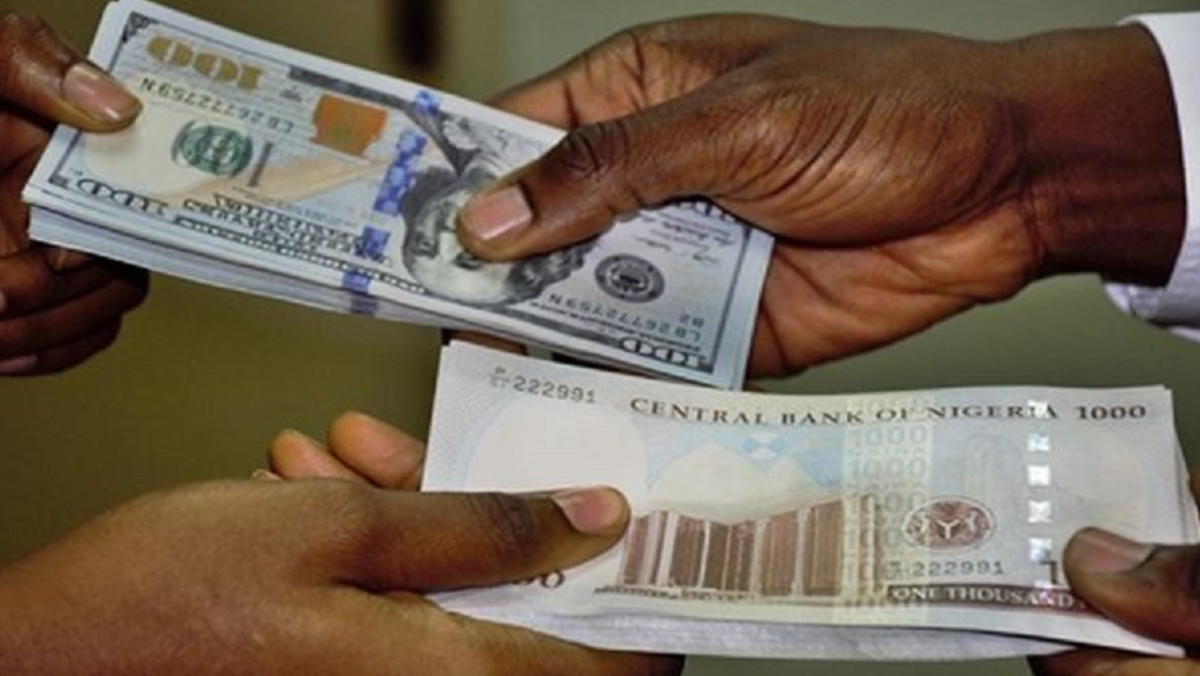The naira struggled to maintain its position against the dollar, hovering around the N1,600 mark in the official foreign exchange market over the past week.
Despite the dollar index reaching its lowest point since January, FMDQ data shows that the naira’s value fell by N15.41, closing at N1,579.89 per dollar on Friday, down from N1,564.40 on Thursday.
In the black market, the naira remained steady at N1,600/$1 across various parts of Nigeria’s business capital.
Meanwhile, Nigeria, Africa’s leading oil producer, is addressing its infrastructure financing gap by issuing dollar bonds domestically, as unfavorable market conditions have stalled Eurobond issuance.
The federal government has approved a N28.8 trillion spending plan for 2024, with a N9.8 trillion deficit to be financed through local and foreign borrowing.
On Monday, selling pressure on the U.S. dollar pushed the USD Index down to 102 points, its lowest since early January, despite a stronger-than-expected improvement in U.S. consumer sentiment.
READ ALSO: Nigeria’s FX market sees $409m drop in turnover amid CBN auction
The dollar lost momentum, marking its sixth consecutive weekly decline, falling more than 0.5% on Friday.
Investors are closely watching Federal Reserve signals, with expectations of potential monetary easing in September.
Fed members Mary Daly and Austan Goolsbee have hinted at a dovish stance, and upcoming policy meeting minutes are likely to support this view.
Fed Chair Jerome Powell’s upcoming speech at Jackson Hole is highly anticipated, as he may discuss the possibility of a rate cut.
U.S. Treasury yields remain low, with the 10-year yield below 3%, and U.S. stock index futures are nearly flat. Futures suggest a 25% chance of a 50 basis point rate cut, with job data revisions expected on Wednesday potentially revealing labor market weaknesses.
Federal Reserve policymaker Christopher Waller, known for his hawkish stance, is set to speak later today, which could influence the USD’s performance if he pushes back against rate-cut expectations.
The USD Index finished the week lower for the sixth consecutive week, dropping more than 0.5% on Friday.
Increased risk appetite and declining U.S. Treasury bond yields made it challenging for the USD to hold its ground heading into the weekend.
The U.S. 10-year yield remains below 3%, and U.S. stock index futures are nearly flat as Monday trading begins in Europe.

 Business6 days ago
Business6 days ago
 Business6 days ago
Business6 days ago
 Business6 days ago
Business6 days ago
 Latest1 day ago
Latest1 day ago
 Business6 days ago
Business6 days ago
 Business6 days ago
Business6 days ago
 Politics6 days ago
Politics6 days ago
 Latest2 days ago
Latest2 days ago

